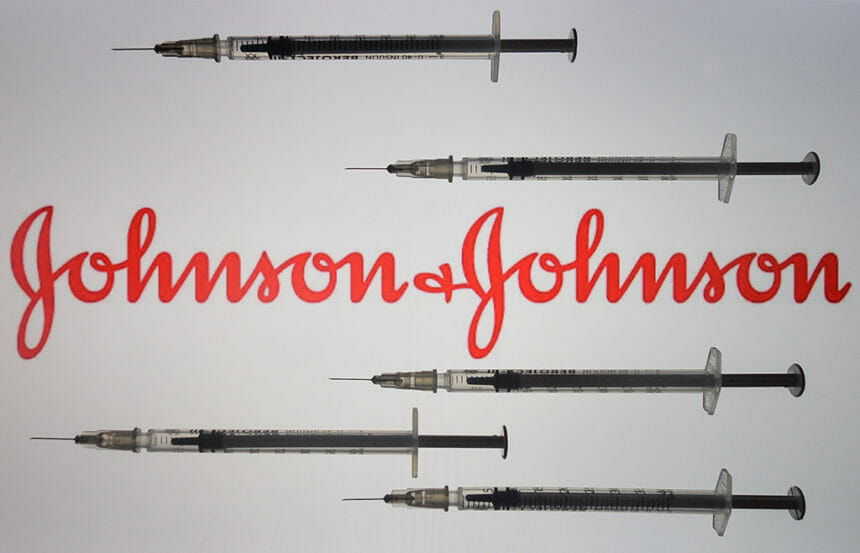Biopharma executives who took to the virtual podium during the first day of the annual JPMorgan Healthcare Conference touted pipeline assets, share buybacks and strategic acquisitions. Yet it was their remarks about COVID-19 vaccines that drew the most audience attention during Monday’s kickoff to the event, held completely online for the first time.
While it’s not surprising that status updates for coronavirus shots from Pfizer/BioNTech, Moderna and Johnson & Johnson would draw significant airtime, some of those updates were particularly newsworthy, especially in light of the surging pandemic and slower-than-expected vaccine rollout.
The most salient of these proved to be that of Comirnaty, the mRNA COVID vaccine from Pfizer and BioNTech. Dr. Ugur Sahin, CEO of BioNTech, revealed that the firms had upped production capacity to two billion doses by year’s end, from 1.3 billion. That gives the drugmakers the potential to reach up to a billion people with the two-dose shot. Some 32.9 million doses have shipped thus far.
The big boost came thanks to a label change that allows doctors to stretch a five-dose vial to six (thus “increasing the dose 20% overnight,” said Sahin), and by adding manufacturing capacity. The latter includes a second factory in Germany that’s set to become operational next month, according to company slides.
During a curtailed Q&A session, Sahin was also asked how confident he is that the Pfizer/BioNTech vaccine would work against the new variants of Sars-CoV-2 virus. He replied that, in testing against the U.K. and South African variants, Comirnaty’s efficacy was unaffected. (Phase III clinical trials have shown the shot has 95% efficacy and 94% in those over 65.)
The Food and Drug Administration approved the Pfizer/BioNTech vaccine on an emergency basis Dec. 11. A week later came the emergency authorization for Moderna’s COVID shot, which is also mRNA-based. Moderna’s chief medical officer, Dr. Tal Zaks, was asked a similar question about the ability of its shot, mRNA-1273, to protect against new variants of the virus, during the Q&A portion of his firm’s session Monday.
“From what we’ve seen so far, the variants being described do not alter the ability of neutralizing antibodies elicited by vaccination to neutralize the virus,” Zaks said.
“My definition of when to get worried,” he continued, “is either when we see real clinical data that suggests that people who have been sick or immunized are getting sick with the new variants. Yes, we’ve seen some case reports of people here and there getting infected, but I don’t think it’s material.”
On cutting the two-dose regimen in half, a vaccine strategy which President-elect Joe Biden announced last week as a way to improve the availability of COVID vaccines, “We’re advocating for following the data and following the science,” Zaks replied. “We don’t have data on efficacy for half the dose.”
Moderna CEO Stephane Bancel said the firm anticipates delivering between 600 million and one billion doses of mRNA-1273 this year. “But given it’s a new manufacturing process,” he said, “yield and availability could impact the number, and we will refine the number as the year goes by.” It’s guiding to produce up to 1.2 billion doses next year.
Among other senior executives giving updates on their shots, Alex Gorsky, J&J chairman and CEO, said the healthcare products giant is in the final stages of its development of its COVID-19 vaccine. The shot, codenamed Ad26.COV2.S, is a one-doser which has been in Phase III since September.
“We’re in the final stages of that analysis as we speak,” said Gorsky. “We hope to have that information very soon.” In terms of supply, the CEO recalled that J&J’s goal was to have hundreds of millions of doses of its shot available through the first half of this year and close to a billion by year’s end. “We’re still on-track to be able to achieve those volumes.”
Pharma company Novavax got into the act, too, sharing progress on its own COVID vaccine, NVX-CoV2373, which is being tested in three efficacy trials. New data from Phase I studies in the U.S. and U.K. show the vaccine’s robust responses persisting up to six months, with a good safety profile. The data also confirm that a five-microgram dose is well-tolerated, with strong and consistent responses, said Greg Glenn, head of R&D.








